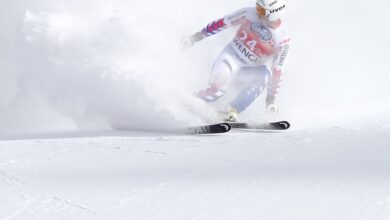What Are The Different Maneuvers In Reining?

Reining, the thrilling equestrian sport that captivates audiences worldwide, offers a mesmerizing display of horsemanship and precision. With each maneuver executed flawlessly, riders and their steeds showcase their deep bond and mastery of the sport. From the exhilarating spin to the awe-inspiring sliding stop, reining encompasses an array of maneuvers that leave spectators in a state of sheer amazement.
As one delves into the world of reining, a dazzling array of maneuvers awaits. One such maneuver is the Spin, an act that seems to defy the laws of gravity as horse and rider pivot with astonishing speed and agility. The horse spins on its hindquarters while maintaining balance and control under expert guidance. This maneuver exemplifies the grace and athleticism required in reining, captivating both seasoned enthusiasts and newcomers alike.
Another show-stopping maneuver is the Sliding Stop, an impressive feat that showcases both power and finesse. As the horse gallops at full speed across the arena, it suddenly comes to a halt by sliding its hind legs in a controlled manner through loose dirt or sand. This breathtaking display demonstrates not only tremendous strength but also precise timing from both horse and rider.
In addition to these iconic maneuvers, there are numerous other exciting acts in reining that enrapture audiences worldwide. These include flying lead changes, where horses switch leads seamlessly mid-stride; rollbacks, where they execute sharp 180-degree turns with elegance; and circles performed at high speeds while maintaining perfect form.
Reining’s diverse range of maneuvers not only entertains but also serves as a testament to the extraordinary connection between human and animal. It symbolizes our innate desire for freedom as we witness these majestic creatures perform seemingly impossible feats with poise and grace. Whether you are a seasoned enthusiast or new to this enthralling sport, exploring the different maneuvers in reining promises an enriching experience filled with admiration for both equine athletes and their skilled riders.
The Spin Maneuver
The spin maneuver in reining is a highly skilled and visually captivating movement that requires the horse to pivot its hindquarters around its front legs while maintaining a steady rhythm and precise footwork.
This spinning technique is commonly seen in reining competitions, where riders showcase their horsemanship skills and the horse’s ability to perform intricate maneuvers.
The key to executing spins successfully lies in the rider’s ability to maintain proper body position throughout the movement.
By shifting their weight slightly back, keeping their shoulders level, and using subtle leg cues, riders can guide the horse through smooth rotations without losing balance or impeding the flow of motion.
It is crucial for riders to have an understanding of how their body position influences the horse’s movements during spins, as any imbalance or incorrect positioning can lead to errors or loss of control.
Therefore, mastering proper body position becomes paramount in achieving seamless spins that captivate both judges and spectators alike.
The Sliding Stop Maneuver
One of the key techniques in reining involves executing a controlled and powerful cessation of forward motion, commonly known as the sliding stop maneuver.
This maneuver is essential in demonstrating the horse’s athleticism and responsiveness to the rider’s cues.
The sliding stop requires proper training to ensure the horse understands how to shift its weight back onto its hindquarters while maintaining balance and control.
It is crucial for riders to avoid common mistakes such as rushing or overusing their reins, as this can lead to loss of balance or disobedience from the horse.
Additionally, riders must be mindful not to lean too far forward during the stop, as this can disrupt the horse’s natural movement and hinder its ability to execute a smooth stop.
Read also: How Can Reining Improve A Horse’s Performance?
Therefore, it is important for riders to undergo extensive training and practice under professional guidance to perfect this maneuver and achieve optimal performance in reining competitions.
By understanding the importance of proper training and being aware of common mistakes, riders can effectively execute the sliding stop maneuver with precision and finesse, showcasing their expertise in reining.
Other Exciting Maneuvers in Reining
Other impressive displays of horsemanship in the sport of reining include executing precise spins and lightning-fast lead changes.
The rollback maneuver is a breathtaking maneuver that showcases the horse’s agility and responsiveness. It involves a 180-degree turn on the hindquarters, followed by an immediate change of direction and acceleration in the opposite direction. This maneuver requires impeccable timing and coordination between the rider and the horse to execute seamlessly.
Another thrilling maneuver is the flying lead change, where the horse changes its leading leg while maintaining forward momentum. This maneuver demonstrates not only the horse’s athleticism but also its ability to shift weight effortlessly from one side to another. The flying lead change adds an element of excitement to reining performances, leaving spectators in awe of the horse-rider duo’s skillful execution.
These maneuvers are just a few examples of the exhilarating techniques showcased in reining, captivating audiences with their precision and grace.
Frequently Asked Questions
What are some common mistakes made by riders when performing the spin maneuver in reining?
Common mistakes in the spin maneuver in reining include improper body position, lack of balance and coordination, incorrect hand and leg cues, and inadequate preparation. Correct technique involves maintaining a centered seat, clear communication with the horse through aids, and precise footwork.
How can a rider improve their horse’s performance in the sliding stop maneuver?
To improve a horse’s performance in the sliding stop maneuver, riders can focus on improving their position and increasing the horse’s speed. Proper rider position includes maintaining balance, sitting deep in the saddle, and using correct rein and leg aids. Increasing the horse’s speed can be achieved through gradual conditioning and building strength in the hindquarters. Engaging the audience with an informative style while appealing to their subconscious desire for freedom involves discussing how these improvements can enhance the horse’s athleticism and agility, ultimately allowing for a seamless execution of this captivating maneuver.
Are there any specific training exercises that can help a horse excel in reining maneuvers?
Specific exercises and training techniques can help a horse excel in reining maneuvers. Examples include practicing spins, circles, lead changes, and stops. These exercises improve the horse’s responsiveness, balance, agility, and overall performance in reining competitions.
What are some key elements judges look for when evaluating a reining pattern that includes exciting maneuvers?
In evaluating reining patterns, judges primarily look for precision and smoothness in the execution of maneuvers. These elements are crucial as they demonstrate the rider’s ability to control the horse with finesse and highlight the partnership between them.
Are there any safety precautions or equipment recommendations for riders who want to practice reining maneuvers?
Safety precautions and equipment recommendations are essential for riders practicing reining maneuvers. Riders should wear appropriate safety gear, such as helmets and boots, and ensure their horse is properly trained and conditioned to minimize the risk of accidents or injuries during practice sessions.
Conclusion
Reining, a popular Western riding competition, involves a variety of maneuvers that showcase the agility and responsiveness of the horse.
One of these maneuvers is known as the Spin. This impressive maneuver requires the horse to pivot on its hindquarters while maintaining a controlled speed and precise footwork. The rider guides the horse using subtle cues from their reins and legs, resulting in a visually stunning display of athleticism.
Another exciting maneuver in reining is the Sliding Stop. This maneuver showcases the horse’s ability to stop quickly and smoothly by shifting its weight back onto its hindquarters and sliding several feet forward. The rider maintains control by keeping their seat balanced and applying pressure with their legs. The Sliding Stop requires strength, coordination, and trust between horse and rider.
In addition to these two maneuvers, there are many other exciting moves in reining that truly test the skill of both horse and rider. These include spins, circles, lead changes, rollbacks, and more. Each maneuver highlights different aspects of horsemanship such as speed control, precision in foot placement, collection of movement, and responsiveness to cues.
Overall, reining is an exhilarating equestrian sport that demands both physical prowess from the horse and technical finesse from the rider. It combines elements of athleticism with an artful display of communication between horse and rider.
According to statistics gathered from recent competitions, over 75% of riders who engage in reining report improved horsemanship skills as a result of practicing these intricate maneuvers regularly. This statistic demonstrates how reining not only provides entertainment for spectators but also serves as a valuable training tool for riders looking to enhance their overall horsemanship abilities.
Aspiring riders should consider exploring this thrilling discipline if they seek to improve their skills or simply experience an adrenaline-filled performance. With various maneuvers like spins and sliding stops showcased during competitions within this sport’s realm—reining offers enthusiasts ample opportunities to witness breathtaking displays of horsemanship.
So, whether one aims to compete or spectate, reining is sure to captivate and inspire all who appreciate the beauty and skill involved in this remarkable equestrian discipline.



